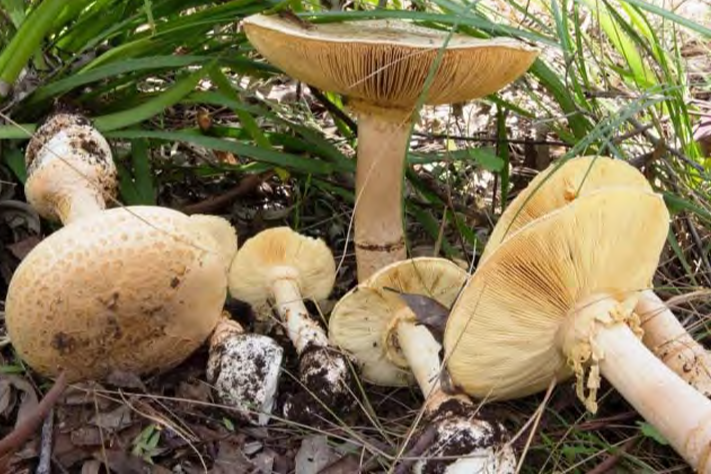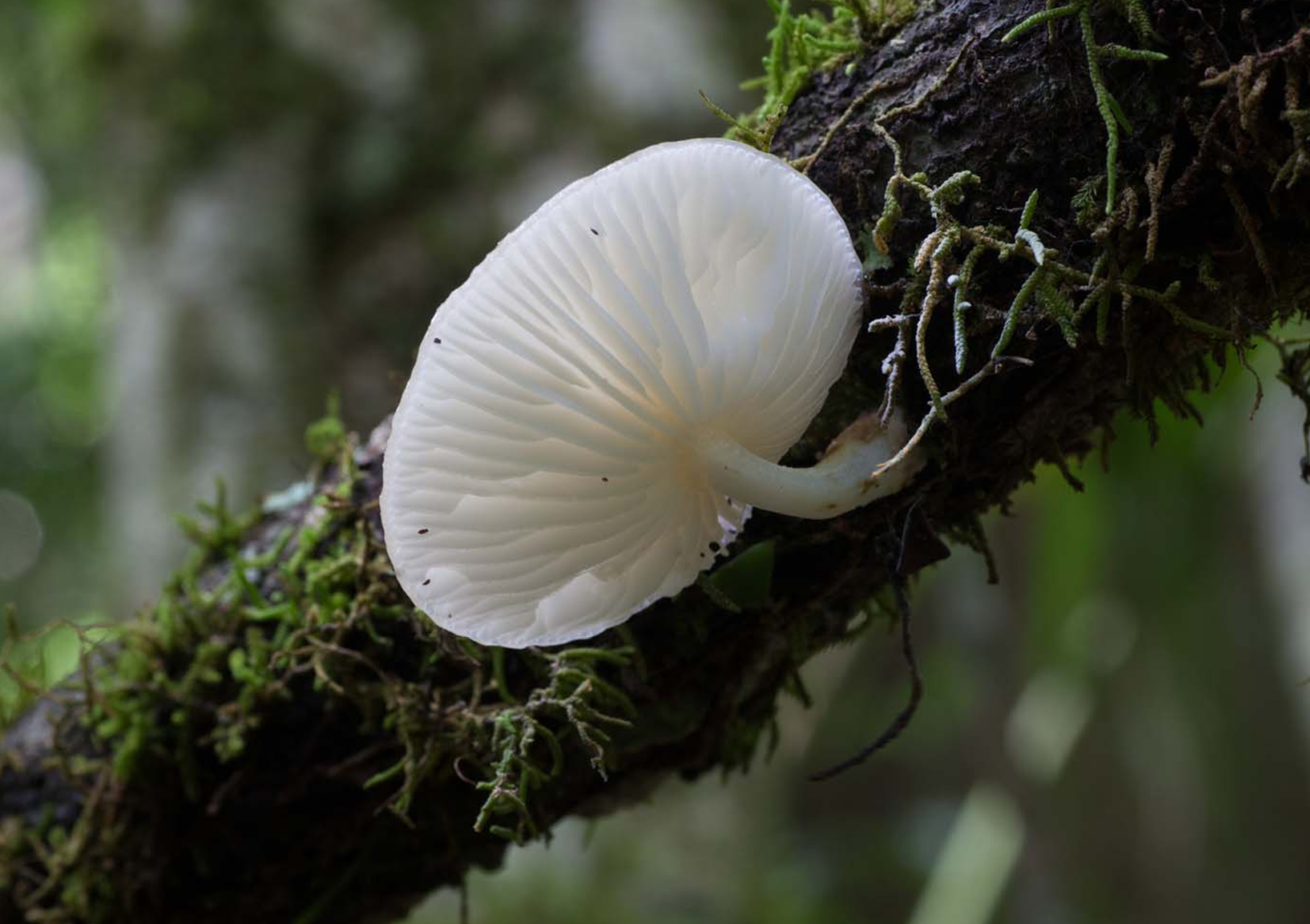|
|
FungiFungi are a highly diverse group of organisms, with over 5.1 million fungal species in existence[1]. Despite this, most of these species have a number of common characteristics such as the presence of a chitinous cell wall and loss of phagotrophic capabilities[8]. The remainder of fungi classification, for taxonomy purposes, is achieved through genomics[8]. Quick facts
For many years fungi were considered part of the plantae kingdom, when classical theories divided all living organisms into plants and animals[8]. Fungi were the first to be separated into a third kingdom. Fungi being the first to be classified separately to animals and plants highlights how different they are from many of the species seen in the natural world. Fungi physical featuresMushrooms are the most recognisable form of fungi. However, traditional depictions of mushrooms are only of their above-ground, reproductive structures, which are only present in some species. The fungi organism is composed of a network of microscopic, filamentous structures known as hyphae, which, as a unit, make up the mycelium[8][7]. These hyphae grow in length, not width, as the organism derives energy from its surroundings. Depending on conditions, the fungi may develop reproductive structures, called fruiting bodies or sporocarps, that assist with dispersing spores[3]. Deriving energyOne of the key characteristics that separates fungi from plants is that fungi do not contain chlorophyll[10]. This means that they cannot produce energy via photosynthesis and must do so by consuming organic matter. This is achieved by the production and use of exoenzymes used to break down large molecules outside of the fungi into smaller ones. These smaller molecules are then able to be transported into fungi cells where the stored energy in organic compound bonds (e.g. found in sugars or proteins) can be extracted[2][5]. Reproduction processesWhen it comes to reproduction in fungi, two groups are described: ‘perfect’ and ‘imperfect’ fungi. Imperfect fungi are those that engage only in asexual reproduction, and perfect fungi are those that engage in both asexual and sexual reproduction. In both forms of reproduction, the process begins with the mycelium[3]. Asexual reproductionAsexual reproduction typically occurs either through the formation and dispersal of asexual spores, or via mycelia fragmentation. Asexual spores are produced through the process of mitosis and are genetically identical to the parent that they are derived from. These spores are usually released above-ground, from a sporocarp, and are commonly dispersed by wind or water, but may also be transported by mobile organisms such as insects. Mycelia fragmentation can produce multiple organisms from an individual as well. If the hyphae are broken, many species of fungi can continue to grow from a fragmented portion of the mycelium. This method of reproduction also results in an organism that is genetically identical to the parent (i.e. the source of the mycelium fragment)[6][3]. Sexual reproductionThe first step in sexual reproduction of fungi is plasmogamy, a type of cell fusion between hyphae of two different individuals. This step brings the nuclei within cells close to one another but does not fuse them. The second step is karyogamy which fuses the cells.[9]. In many other types of organisms, such as animals and plants, the above two steps occur quickly after one another, during a single event called fertilisation. However, in fungi, plasmogamy and karyogamy may have time lags between them, ranging anywhere from minutes up to centuries[9]. The final step in the sexual reproduction process, resulting in the production of spores, is meiosis. These spores are dispersed in a similar manner to asexual spores, above-ground, and via a fruiting body or sporocarp[6]. Additional information
References
Last updated: 2 August 2023 This page should be cited as: Department of Environment, Science and Innovation, Queensland (2023) Fungi, WetlandInfo website, accessed 25 June 2024. Available at: https://wetlandinfo.des.qld.gov.au/wetlands/ecology/components/biota/fungi/ |

 — Department of Environment, Science and Innovation
— Department of Environment, Science and Innovation





